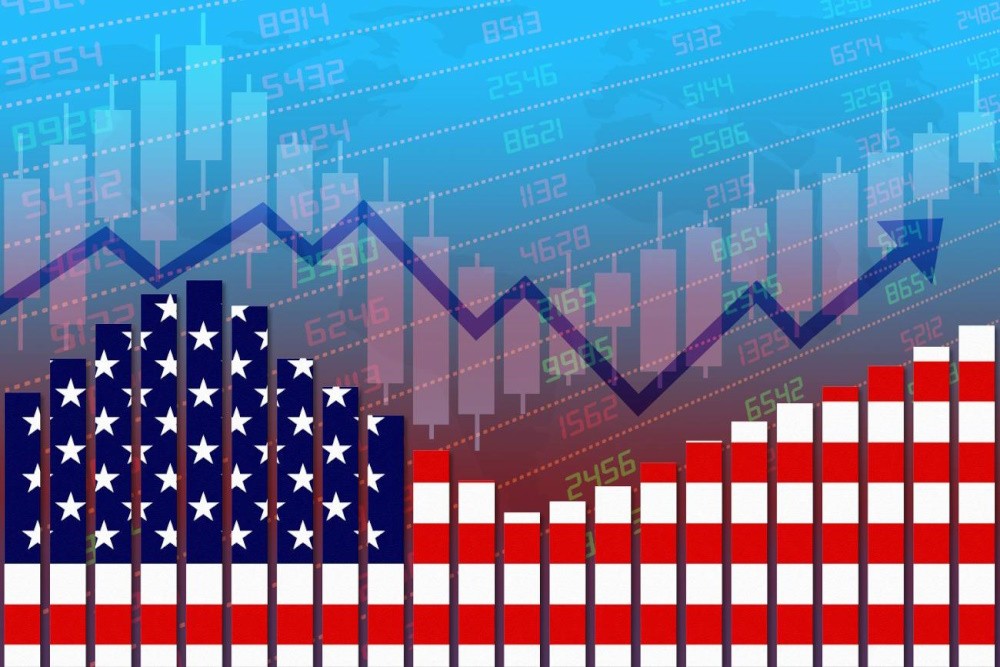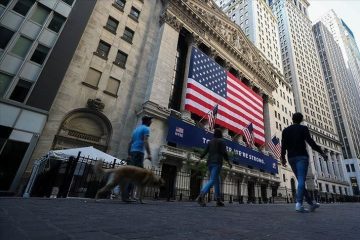Resilient U.S. Economy Defies Expectations

There’s a saying that economic expansions don’t die of old age: They’re murdered by the Federal Reserve. If that’s the case, then the U.S. economy is outrunning its would-be assailant this year. Steady hiring and robust consumer spending offer the latest evidence that the pandemic’s effects and the government’s unprecedented policy responses made the economy surprisingly resilient to the Fed’s most aggressive interest-rate increases in 40 years. Employers added 3.1 million jobs over the past 12 months, including 187,000 in August, the Labor Department said Friday. The unemployment rate rose to 3.8% from 3.5% in July as more Americans joined the workforce.
Three factors explain why the U.S. economy keeps defying predictions of recession.
First, a growing workforce and slower price increases have boosted Americans’ inflation-adjusted or “real” incomes this year, fueling more hiring and spending.
Second, the unusual nature of the Covid-19 pandemic distorted spending patterns, leading to shortages of goods, housing and workers. This created enormous pent-up demand that has been less sensitive, for now, to higher rates.
Third, the government initially showered the economy with cash and held interest rates at rock-bottom levels, allowing businesses and consumers to lock in lower borrowing costs. Subsequent legislation, including the Inflation Reduction Act and the $53 billion Chips and Science Act, further boosted federal spending and spurred additional private-sector investment in manufacturing.
Given that backdrop, “the real question is why would the economy have capitulated?” said Christopher Thornberg, founding partner at Beacon Economics in Los Angeles. None of this implies the economy will be resilient forever. The Fed raised its benchmark federal-funds rate to a 22-year high in July, and officials have kept the door open to further hikes if activity accelerates.
Covid-era buffers will eventually erode—for example, as companies that locked in lower borrowing costs have to roll over their debts in coming years at higher rates and as households run down their savings. Banks are already pulling back on lending after two high-profile failures fanned concerns about their profitability. Lenders face potential losses on office buildings whose values will tumble if employers continue to embrace hybrid work.
The economy has benefited this year from an easing of pandemic-driven labor shortages as more immigrants and native-born Americans join the workforce. Companies are holding tight to workers and bumping up their pay. Real after-tax incomes rose 3.8% in July from a year earlier and have risen year-over-year each month since January. Those gains help fuel robust consumer spending, which accounts for roughly two-thirds of U.S. economic output. “Real incomes are what is driving the bus here,” said Neil Dutta, an economist at the research firm Renaissance Macro.
The Fed has clearly slowed credit-sensitive activity, including private equity and commercial real estate. “But in terms of the backbone of the U.S. economy, the spine is strong” because of robust income growth, said Dutta. Today’s tight labor market in part reflects a postpandemic shift in bargaining power. Businesses boosted worker pay as they struggled to staff up following lockdowns. Americans surveyed by the New York Fed in July expected annual salary offers in the subsequent four months of about $67,000 upon receiving a job offer, well above $60,000 a year earlier.
At the same time, the share of workers who are quitting their jobs—often a sign of bargaining power as employees leave for higher pay elsewhere—eased in July and is returning to prepandemic levels, suggesting a less tight labor market. Employers report being reluctant to let workers go, given the time and effort it took over the past two years to hire them. “Even if we’re going to have a mild recession, I think a lot of employers are saying it isn’t worth the effort of laying off people,” said Bernard Baumohl, chief global economist at the Economic Outlook Group. “They don’t want to get caught short.”
Some companies report easier hiring for once-hard-to-fill roles such as truck drivers and warehouse workers. Turnover has stabilized at ArcBest
, one of the nation’s largest trucking companies. The company is adding hundreds of drivers and dockworkers from its bankrupt rival Yellow, said Judy McReynolds, ArcBest’s chief executive. “I wouldn’t say the driver shortage is over, but” for the next year “we’re going to be in a significantly improved place from where we were,” McReynolds said.
Turnover has stabilized at ArcBest, says Judy McReynolds, CEO of the trucking company. McReynolds expects slower hiring as freight demand softens. The company is still looking to bring on sales and technology employees as well as drivers to replace those retiring, but it doesn’t plan to add workers as rapidly as in 2021 and 2022, when it added thousands of new workers. ArcBest had about 15,700 employees as of December 2022.
Other companies still face staffing challenges. United Airlines, which expects to hire 15,000 people this year, faced such a dearth of candidates for ramp-worker roles at its Denver hub that it hosted a job fair in Guam and relocated more than 450 new hires from Guam to Colorado, said human resources chief Kate Gebo.
The recovery from the pandemic has been uneven, creating staggered mini-recessions in different industries. Some sectors that are normally very interest-rate sensitive haven’t provided the expected drag on growth this year. Auto production couldn’t keep up with demand in 2020 and 2021 but now is catching up, so it has been less sensitive to higher rates. Rising mortgage rates delivered a huge blow to housing affordability, which has kept many homeowners frozen in place. That has benefited home builders, who face less competition from resales and who have used stronger balance sheets to offer discounted prices in the form of mortgage-rate “buy-downs.”
“There are still buyers out there. They have very few options. They therefore find their way to us,” said Douglas Yearley, chief executive of luxury-home builder Toll Brothers
in an earnings call last month. In 2020 and 2021, the U.S. and other governments provided trillions of dollars in financial assistance to households, which were also saving money as the pandemic interrupted normal spending patterns. Meanwhile, central banks cut interest rates, enabling Americans to lower their borrowing costs.
Normally, Fed rate increases force heavily indebted consumers and businesses to rein in spending because they have to pay more to service their loans. But consumers haven’t overextended themselves with debt; household debt-service payments accounted for 9.6% of disposable personal income during the first quarter, below the lowest levels recorded between 1980 and the onset of the pandemic in March 2020. Federal funding continues to flow from President Biden’s roughly $1 trillion infrastructure package approved in 2021 and two pieces of legislation signed last year that provide hundreds of billions of dollars to boost renewable-energy production and semiconductor manufacturing.
Construction companies are encountering the triple threat of an aging workforce, unpredictable immigration policies and overheated demand driven by federal spending and housing shortages, said John Fish, chairman and CEO of Suffolk, a $5.5 billion construction contractor based in Boston.
Stocks have rallied this year, buoyed by the prospect that cooling inflation allows growth to slow without requiring a recession—a so-called soft landing. The S&P 500 declined 27% in the first nine months of 2022 but has since recovered. It is up more than 17% this year and closed Friday nearly 6% below its all-time high recorded at the start of 2022. “We’re going to come out with a soft landing,” Fish said. Bolt onto that a global economic recovery, additional federal spending and an eventual decline in interest rates, and “those ingredients will create tremendous demand in the service parts of our economy.”
Rising mortgage rates have indirectly benefited home builders, which face less competition from resales and which are offering mortgage-rate ‘buy-downs.’ Other executives see storm clouds as lower-income consumers exhaust savings and face higher borrowing costs. Credit-card delinquencies at Macy’s were higher than anticipated during the second quarter. “We just believe that the customer is coming under pressure” due to higher interest rates and an end to student-debt relief, said Macy’s Chief Financial Officer Adrian Mitchell.
Economists are divided over the outlook. Some think inflation is now mostly under control as pandemic idiosyncrasies resolve themselves, helped by Fed interest-rate increases. They expect the Fed will cut rates next year, enabling a soft landing. Others worry that the Fed has either raised rates too much or will have to lift them higher to crush demand and reduce inflation. Restrictive monetary policy could trigger a recession by leading to a sharp pullback in lending and declines in asset values.
Bank of America economists recently scrapped their forecast of a U.S. recession within the next year, while forecasters at Barclays and Citi postponed the anticipated start of a mild downturn into next spring. Recent data have been “very, very positive” for the soft-landing view, said Jan Hatzius, chief economist at Goldman Sachs. In July, he lowered to 20% the probability of a U.S. recession over the next 12 months, down from 35% in March after the collapse of Silicon Valley Bank fanned fears of a broader banking crisis.
Strength in the U.S. raises questions over how long it can diverge from the rest of the world. China’s leaders are struggling to spur growth in an economy beset by weak consumer confidence, a drawn-out housing slump and sinking exports. Germany’s trade-dependent economy is expected to shrink this year, according to the International Monetary Fund, reflecting weakness in manufacturing and the disruptions from Russia’s invasion of Ukraine.
Some economists highlight the role of the U.S.’s good luck. “Apart from the cluster of regional-bank failures, we’ve had few” financial-market disruptions, noted Daleep Singh, chief global economist at PGIM Fixed Income. And since Russia’s 2022 invasion of Ukraine, no new geopolitical crises have erupted to disrupt supply chains or oil markets.




